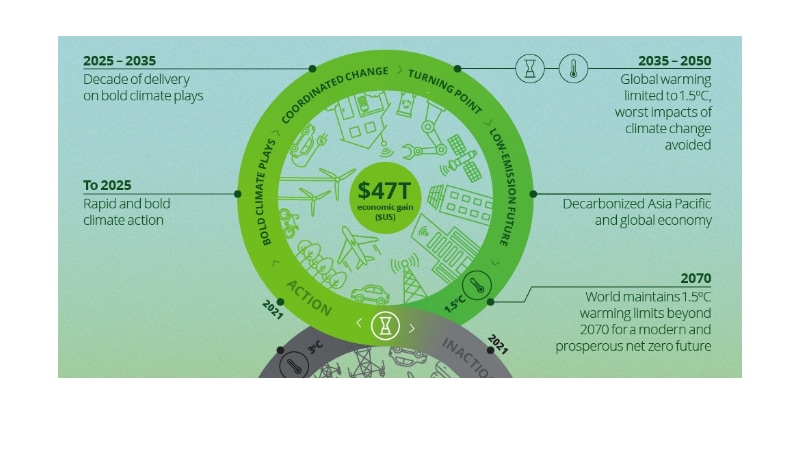Analysis
10 minute read
Asia Pacific’s turning point
How climate action can drive our economic future
Time is running out to act on climate change. But rather than climate action being a drain on our economy, our Asia Pacific report shows it will significantly boost GDP and accelerate phenomenal growth.
With decarbonization acting as a new economic engine, Asia Pacific plays a key role in providing the skills, technology, innovation, and finance for this global transformation.
By moving quickly now with bold action, we have a unique opportunity to create a new engine for sustainable economic prosperity and avert the worst impacts of an altered climate.
Asia Pacific’s turning point
How climate action can drive our economic future
Asia Pacific’s turning point
How climate action can drive our economic future
Asia Pacific highlights
Dive into the data






